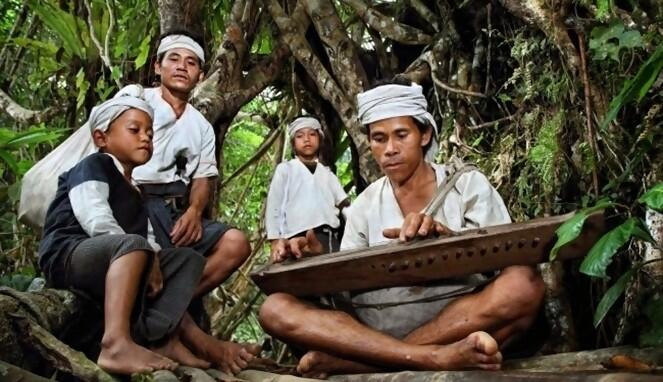The Sundanese Wiwitan belief in Kasepuhan Ciptagelar has existed since the time of Prabu Siliwangi!
 |
| Sunda Wiwitan has existed since the time of Prabu Siliwangi |
Although formally, the community of Kasepuhan Ciptagelar declares that they embrace Islam, some still consider themselves as followers of "Sunda Wiwitan," which is often called "urang girang" or "kolot" by other Sundanese people.
The highest power in the Sunda Wiwitan religion is called according to its nature, such as Sang Hyang Kresa (The Almighty), Nu Ngersaken (The Willful), Batara Jagat (The Ruler of the Universe), Batara Seda Niskala (The Unseen God), and Batara Tunggal.
The codes of conduct and daily life are based on "pikukuh" that originated from "Karuhun" and has been passed down from generation to generation.
Monotheism has been the foundation of the Sundanese people's religion since the time of the Sunda Wiwitan religion or the native Sunda religion.
All the gods in the Hindu concept (Brahma, Vishnu, Shiva, Indra, Yama, etc.) are subordinate to Batara Seda Niskala (The Unseen God) (Edi.S.Ekadjati; 1995: 73).
The Indian concept of gods is adjusted to the local monotheistic belief system.
Monotheism is often used as a logical reason for questioning the relatively easy process of Islam's entry into the Sunda territory.
During the reign of Aki Ardjo, the people had already known about Islam, and some of them had embraced it.
As we know, the origin of the Kasepuhan Ciptagelar community comes from the Hindu-inspired Sunda Kingdom in West Java.
Their arrival in the Kendeng mountains was a rejection of Islam, but in subsequent developments, Islam began to be accepted among them.
Islam, which came peacefully and without coercion, attracted them to embrace it. However, the people who embraced Islam still remained a minority.
In addition, Islamic sharia is still mixed with Hindu traditions, which is not a problem for Islam because it entered peacefully, full of adjustments and convenience, so it does not burden its people.
The people who embrace Islam and Sunda Wiwitan can live side by side and respect each other.
Aki Ardjo did not prohibit or limit his people who wished to embrace Islam as long as they could live side by side and obey the Sunda customs, which were inherited from their ancestors.
This policy continues until the current leadership of Abah Ugi, so that the number of Muslims continues to grow.
The facilities for places of worship are still lacking, as there is only a small mosque available.
Daily activities in the mosque include congregational Maghrib prayers and Quran study for 20 young children.
Those who fully practice Islamic sharia are still a minority.
It is reported that a relatively large mosque will be built on the site of Abah's wife's bathhouse.
In the Tatali Paranti Karuhun, it is also explained about the beliefs of the Kasepuhan community, which have been influenced by Islam, namely the understanding of "lain selam lawas, lain selam anyar tapi selam pangandika gusti rasul" (not old Islam, not new Islam, but Islam that follows the teachings of the Prophet).
The most fundamental aspect of this belief is the understanding of "pangandika" or speech and behavior (Sunnah) according to the will of the Creator.***
Source: Research on Local Religious Understanding, Case Study in Kasepuhan Ciptagelar. Written by Nuhrison M. Nuh, Researcher at the Research and Development Center for Religious Life, Research and Development Agency and Education and Training Ministry of Religion, Republic of Indonesia, 2013.